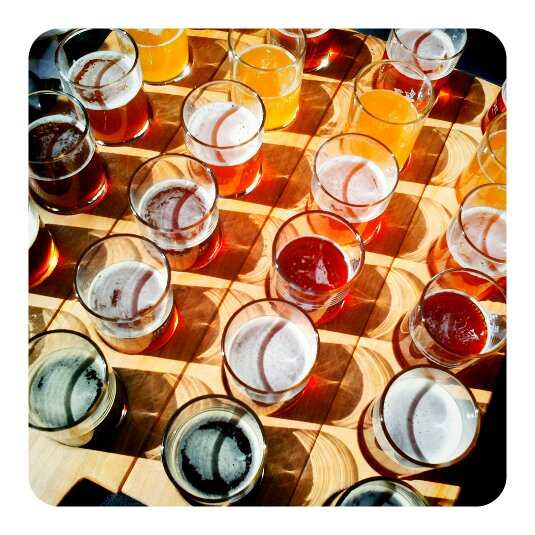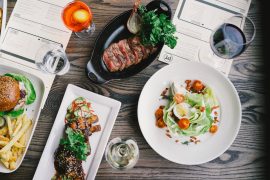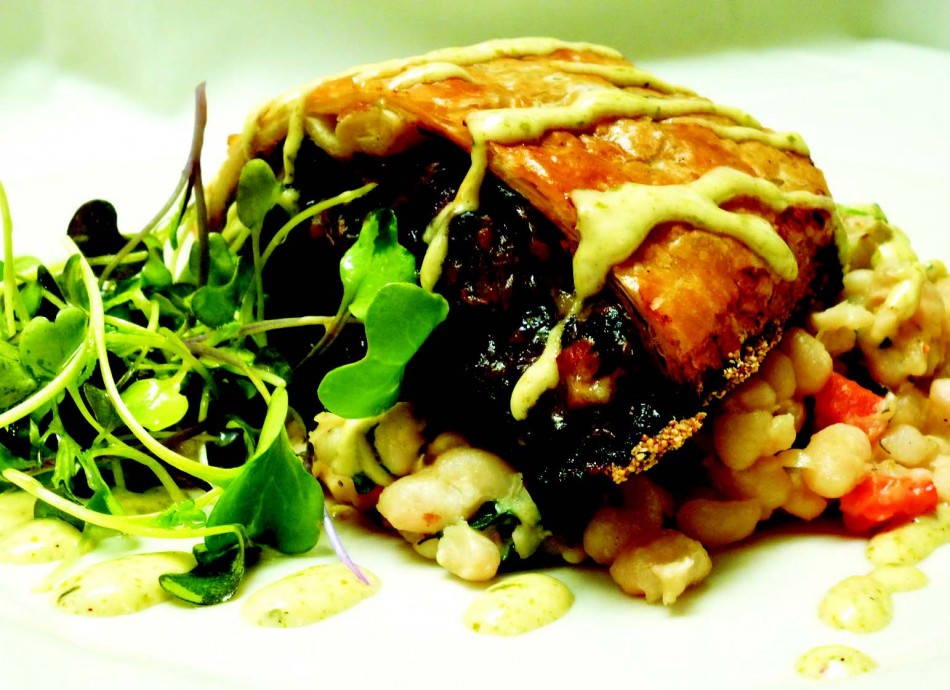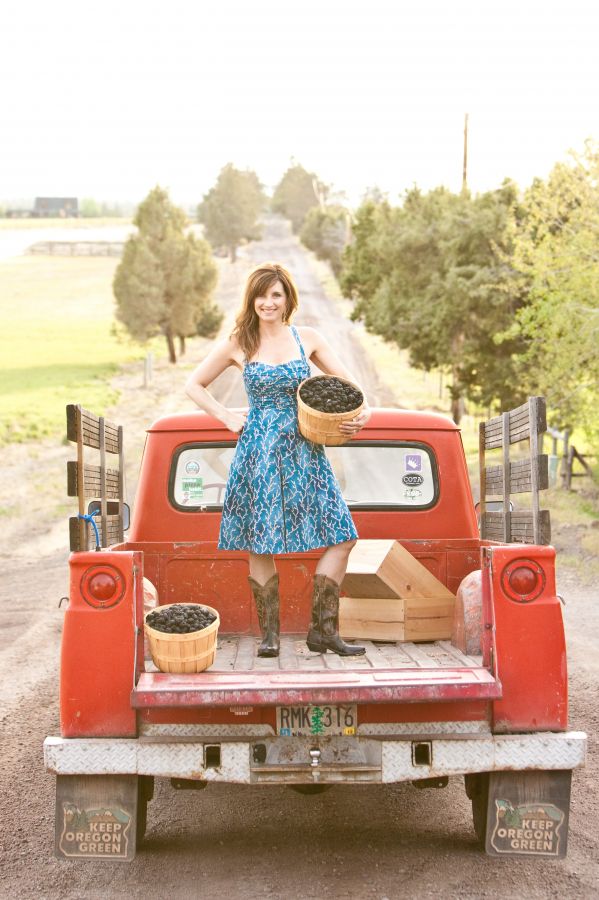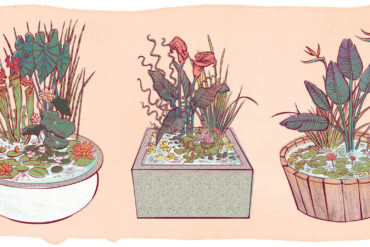As a beer lover and beer writer in Oregon, I’m fortunate to be exposed to all the latest releases, collaborations and zany combinations breweries dream up. In the Pacific Northwest, high Alcohol by Volume (ABV) beer is the standard. The unsuspecting drinker can get caught up a proverbial creek in two or three beers’ time.
Despite my unbridled enthusiasm for all that Oregon beer has to offer, even the most diehard of fans grow weary of being bonked over the head by a wallop of alcohol or a fistful of hops, running into beer portfolios and tap lists where the average ABV runs well above 6%. Some brew enthusiasts, such as local author Pete Dunlop, are voicing concern over what they see as excessive alcohol in their beer. “We all love our 7% Red and IPA, but at some point you have to ask if the extra alcohol is really needed. I see it as a health issue.”
So, how does an Oregon beer drinker find tasty, low alcohol beer? Is there a buzzword? Behold the “session” beer; the latest trend capturing the hearts of beer lovers everywhere. While the rumor mill grinds away at the origin of the session label, it is often credited to one of the two allowed drinking periods or “sessions” during World War I production workers’ days, and has come to be identified with less than 5% ABV.
Dismissed and misunderstood by some as lacking in flavor, session beer is growing up and gaining momentum in the craft beer world; styles are diversifying and availability is broadening. Session beers are no longer synonymous with watery summer lagers or known solely as “lawnmower beers.”
“I think the arms race to make the highest ABV/IBU [international bitterness units] might actually be coming to an end,” offers Harris. “The vast majority of beer drinkers don’t want their taste-buds stripped off and their blood alcohol content over the driving limit after a couple sips of beer.” In addition to keeping health in mind, some devotees prefer beers that can be enjoyed during social conversation with colleagues or during a leisurely dinner—without stumbling toward a cab upon departure.
Everyday folk are joining the call for session beers, and brewers are responding. A low alcohol beer makes health sense for brewers, too, as they are able to enjoy the fruits of their labors. As Jack Harris of Fort George Brewery explains, “We have always had an attraction to lower alcohol beers. I drink beer pretty much all day, so we have had to develop some that make that possible.”
The subtle nuances and scientific details in a good beer created with low ABV represent a highly refined brewing process. While some palates might gravitate toward aggressive hops, robust malt, or bourbon tones, the profiles in modern session beers are just as flavorful and exciting.
Harris shares that despite his respect for the technique and work that goes into brewing Double/Triple IPA and Stouts, a careful touch is needed when creating a session beer. “Flaws cannot be as easily hidden under high alpha hops and booze. Yeast has to be very clean, and attenuation has to be carefully controlled with correct mash temperatures and ingredients so the beer does not taste thin or watery.”
Trevor Rogers of De Garde Brewing in Tillamook navigates the perilous brewing of session beer, while refusing to compromise on flavor. “Naturally,” he says, “the flavor in the beer we drink is based upon the ingredients we put into it. Less ingredients will almost always result in less intensity of flavor.”
Successful brewers know how to showcase ingredients in their “most unmuted forms” says Breakside Brewery’s Ben Edmunds. “As a brewer, I learn much more about the flavors of certain base malts, character malts and hops when employing them in these beers.” Edmunds concludes that in session beers, “There are fewer esters, fusel alcohols, and sweetness to obscure those flavors and aromas. Crafting session beers with body and tons of character requires an expert understanding of the raw materials of brewing.”
Brett Begani, an Oregon home brewer and beer aficionado, looks for good flavor profiles in session beers, and appreciates the ways in which noteworthy session recipes differ from beers with higher alcohol content. “The biggest problem I see with brewers trying a session beer without having brewed one before is they just cut back a current recipe. Building the beer from scratch is the best way to go… a beer changes dramatically as you scale it up or down in strength. It’s a balance of finding the right residual flavor with the lower alcohol percentage. Not easy.”
10 Barrel Brewer Jimmy Seifrit captures it in a nutshell. “To create an easy drinking beer with flavor and no technical flaws is my idea of brewer’s art. Because of the simplicity of these beers, any negative attribute just jumps out of the glass. [Session beers] are the beers I personally take the most pride in. It shows the skill of the brewer.” Edmunds concurs, “We find lower ABV beers to be challenging to brew and fun to drink. Insofar as breweries are responsible for promoting a “healthy” consumption of alcohol, I think it’s a no-brainer to get behind session beers.”
The next time you’re in the mood for a beer, try something sessionable. Tap lists now offer several choices, as brewers in Oregon are crafting session recipes year-round—an eagerly anticipated and exciting turn of events for beer fanciers who have been pining after flavorful and low ABV craft beer. A tasty showcase of our local brewers’ best talent, session beers are worth a sip.
Suggested Session Beers
Breakside | Milwaukie | Dry Stout | 4.7%
Breakside | Portland | Grapefruit Chamomile Sour Wheat | 4.7%
Fort George | Astoria | Carpe Diem | 4%
McMenamin’s Edgefield | Troutdale | Mort’s Mild | 3.4%
McMenamin’s Old St. Francis | Bend | Hop Island ISA | 4.9%
Brewers Union Local 180 | Oakridge | Little Sir John | 3.9%
De Garde | Tillamook | Bu Weisse | 2.1%
Flat Tail | Corvallis | Cucumber Cuvee | 4.5%
Crux Fermentation Project | Bend | Crux Off Leash | 4.5%
Migration | Portland | Portliner Weisse | 3.6%
The Commons | Portland | Fleur de Blanc | 5.0%
Pfriem Family Brewers | Hood River | Pfriem Pilsner | 4.9%
Gigantic / Ecliptic | Portland | TicWitTic | 3.9%
Widmer Brothers | Portland | Double MAC | 4.6%
Barley Brown’s | Baker City | English Mild | 3.0%
Falling Sky | Eugene | Kama Sumatra Coffee Porter | 4.6%
Falling Sky | Eugene | Count NIBula Cacao Porter | 4.4%
Coalition | Portland | Simple: ISA | 4.0%
Coalition | Portland | Wheat the People | 4.4%
Base Camp | Portland | Cross Channel Mild | 3.3%
Base Camp | Portland | Uncommon Ground Dunkel | 4.1%
Sasquatch | Portland | Oregon Session Ale | 4.7%
Santiam Brewing | Salem | Swisher Mild(cask) | 4% | 20 IBU
Santiam Brewing | Salem | Double Top Ordinary Bitter (cask) | 4.5% | 35 IBU
Santiam Brewing | Salem | Ode Witbier | 4.7% | 16 IBU
Salem Ale Works | Salem | Hootenanny Honey Basil | 4.7% | 18 IBU
Salem Ale Works | Salem | Cloverfield Rye | 5.0% | 19 IBU
 Engdahl is the founder of Oregon Beer Country, a travel and tourism site dedicated to all things beer in Oregon. Emily is a freelance writer for 1859, Travel Oregon, the Oregon Beer Growler, and craftbeer.com. She is a Native Oregonian, graphic designer, homebrewer, beer drinker, coffee roaster, joker, instigator, helper, laugher, listener, voracious reader, chicken keeper, and dog and kid wrangler. Basically, a many hats wearer.
Engdahl is the founder of Oregon Beer Country, a travel and tourism site dedicated to all things beer in Oregon. Emily is a freelance writer for 1859, Travel Oregon, the Oregon Beer Growler, and craftbeer.com. She is a Native Oregonian, graphic designer, homebrewer, beer drinker, coffee roaster, joker, instigator, helper, laugher, listener, voracious reader, chicken keeper, and dog and kid wrangler. Basically, a many hats wearer.

